Hallow’s End has a wealth of lore behind it — and Blizzard should use that as the foundation of an overhaul to the holiday
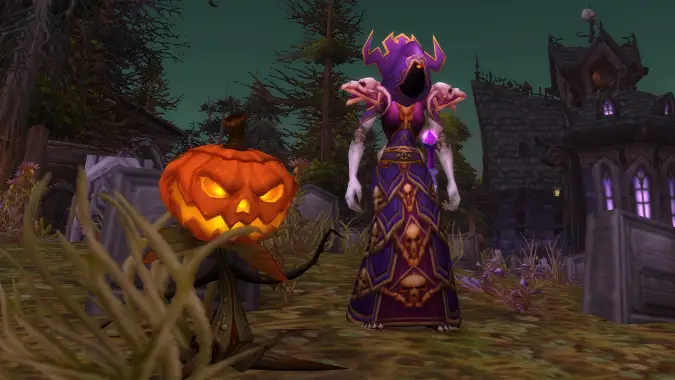
In my opinion, Hallow’s End has been a casualty of the increasing hostility between the Horde and the Alliance since Cataclysm. In particular, the holiday suffers from two problems — a tendency toward stagnation and a removal of its in-game cultural significance that renders it effectively meaningless.
Of course, the reality is that Hallow’s End is the World of Warcraft version of Halloween, and it exists entirely so that the game can give us something to do that’s Halloween-adjacent. And that’s fine. But the holiday in-game has become rote, with people queuing up for a dungeon and then calling it a day. And that’s assuming they don’t already have the mount or whichever item they want for transmog.
But there’s a very interesting backdrop to all that, and a lot more could be done with it. Should be done with it, really. With that out of the way, I have a few thoughts for how to make Hallow’s End more interesting and worth participating in.
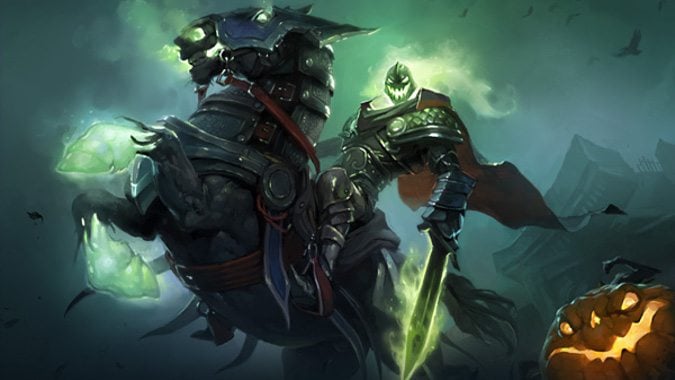
The Horseman
The Headless Horseman as a figure has a story fit for the season. His tale is a tale of a man who witnessed the horrors of the Third War and the Scourge, a figure who saw himself become everything he hated and feared, and who destroyed his own family rather than saving it as he’d intended. His life was tragic and his death and resurrection as the Horseman, due to the interference of the Dreadlord Balnazzar, is a horror. In short, it’s perfectly suitable for the event.
Now, how much of any of that did you actually know?
Did you know that Thomas Thomson — that was his name as a living man — was a Paladin? That he witnessed Arthas’ order to purge Stratholme and turned away, following Uther and Jaina’s disagreement and decision to leave? The events of Thomas Thomson’s life are a horror story that you can only really learn through reading, whether it be a few in game snatches of text or an older comic. And I think this is a lost opportunity to update the holiday and make it relevant, especially as Battle for Azeroth has essentially destroyed Lordaeron and made the likelihood of a big wicker effigy outside old Lordaeron a touch unlikely.
Imagine a series of quests that expanded upon the kind of storytelling we’ve seen in Legion and Battle for Azeroth. This hypothetical quest series would finally lets players see Thomas Thomson go from a just and righteous Paladin and the son of a pumpkin farmer, to a desperate man trying to stop the Scourge. And then finally to the slayer of his own family and a madman, before the final indignity of his malign resurrection. For years, we’ve been killing this figure every Hallow’s End — it’s about time that his story is made a part of the event.
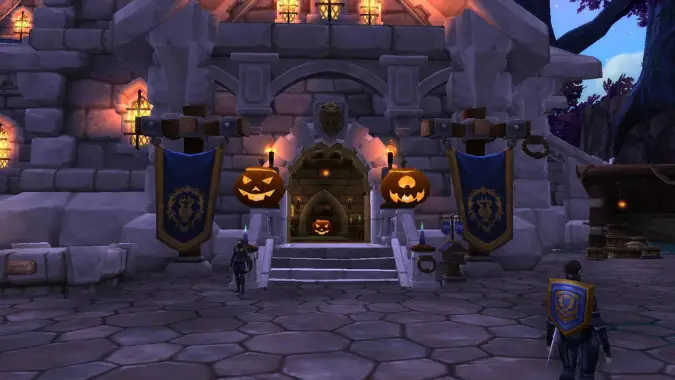
Hallow’s End itself
One of the strangest things about World of Warcraft is how little we know about the rise of Humanity across the Eastern Kingdoms. Hallow’s End, in lore, hearkens back to a time before Humans spread the faith of Lordain in the Holy Light across the continent — it’s a peasant rite become a celebration, marking a time when the barriers between life and death were more permeable. With Battle for Azeroth giving us a look at the beliefs of the people of Drustvar and allowing us to compare them with those of the Gilnean Harvest Witches, a pattern is starting to emerge — a sense of the kinds of religious thoughts that Humanity once held in Azeroth.
The novel Arthas showed us that Hallow’s End was often seen as a time of transition — the symbolic burning of the wicker figures being part of a desire to leave behind something as you move forward into a new future. The barriers between death and life are seen as thin because, in a real way, the dead represent the past — regrets and mistakes that must be mourned and then put aside if we are to move into the future.
Hallow’s End is the perfect storm of ancient and modern in the game, a celebration that the people of the Alliance canonically don’t even fully understand. When the Worgen joined the Alliance, they had to explain much of the significance of the holiday to their allies. We’ve seen that the Thornspeaker Druids have a fairly sophisticated view of death and its role in the natural order, something that the Harvest Witches of Gilneas also seem to have held to some degree. We clearly shouldn’t have the celebration remain the same now that so much has happened — but we definitely should still have it.
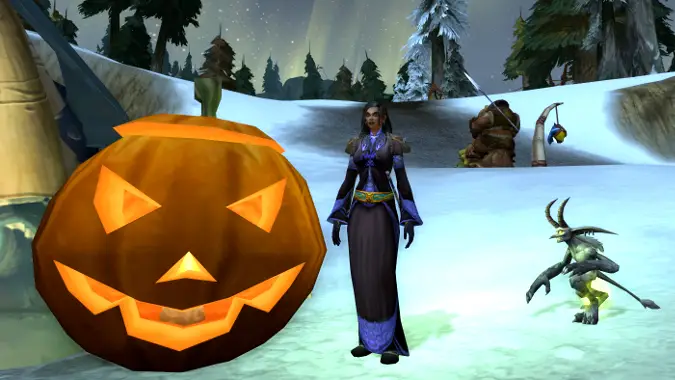
Dead and living
For the Horde, the Forsaken have a deep connection to Hallow’s End and the themes of it. As they’ve become a dispossessed group, the tradition of the season as a time of transition where you can leave behind things you don’t wish to carry forward and the transgressing of the boundary between life and death can — and should — become ever more important to them. In a real way, the Forsaken are what they’ve left behind — their very Humanity is gone and they are something else now, intimately connected to death in a way they could never have imagined in their living days.
Playing up those elements — letting Hallow’s End be a symbol for what the Forsaken have left behind, both by choice and imposed upon them, much as Thomas Thomson left his Humanity behind — would do a lot to tie the holiday into the Horde side of the story.
Meanwhile, off the top of my head, I can think of several ways to tie Hallow’s End into the Alliance side of things. First off, connect the Drust to it — all we currently know of the holiday’s origins is that they date back to the earliest Humans to settle in the Eastern Kingdoms. But it wouldn’t be hard to reveal that the holiday first arose in either Kul Tiras or Gilneas and that it connects to Thros, the Blighted Land, or some similar place on the borderland between life and death.
And of course, there’s the burning of Teldrassil — a massive fire that wholly changed the Night Elves and gave them a new reason to mourn as well as a hatred for the Forsaken and their leader. That leader herself put the World Tree and the civilians upon it to the torch much as she once did the wicker man outside of Lordaeron. The thousands who died on the tree make it a symbol of life and death and could easily become part of a new tradition for the holiday, from both sides. The Forsaken could see it as a symbol of the past being swept away, the Night Elves as the hand of death reaching unwelcome into the world of the living.
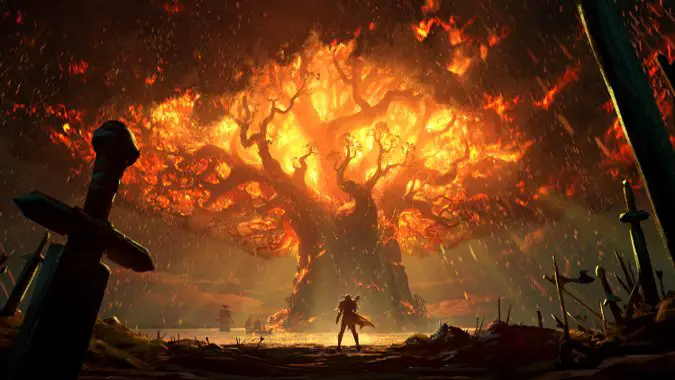
Moving forward
I know that this year’s Hallow’s End won’t try to do any of that. But as a holiday, Hallow’s End is uniquely suited to reflect the changes to the world in World of Warcraft. Azeroth has seen armies of demons and corpses and mad dragons. It’s a world where disaster always looms and the past and future collide. A holiday based around the hope of renewal and the leaving behind of the past in a world where the past often refuses to stay dead. It’s ripe for revision — ripe for a more prominent narrative that uses the life and death of Sir Thomas Thomson as a cautionary tale (and as well as a loot pinata).
In fact, I’d consider ditching the loot. Make it transmog drops and the mount and some pets. That way, you never have to try to update the items again. Play up the lore and Hallow’s End could become something really worth doing.
Please consider supporting our Patreon!
Join the Discussion
Blizzard Watch is a safe space for all readers. By leaving comments on this site you agree to follow our commenting and community guidelines.
 @MatthewWRossi
@MatthewWRossi



